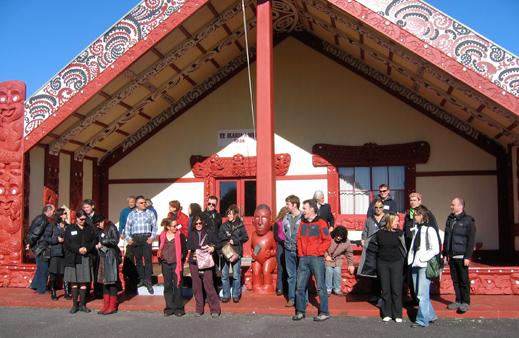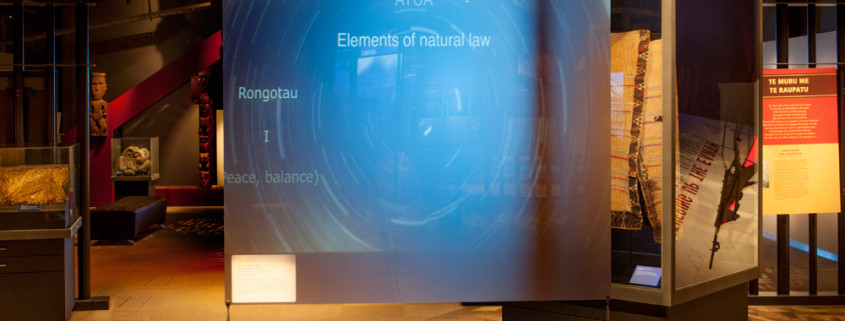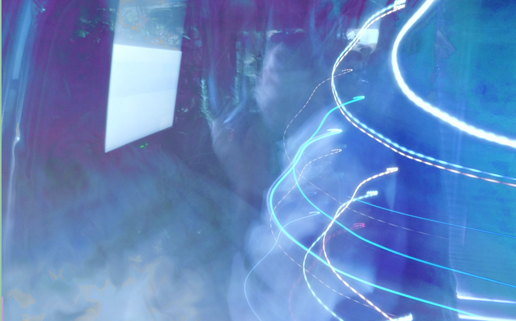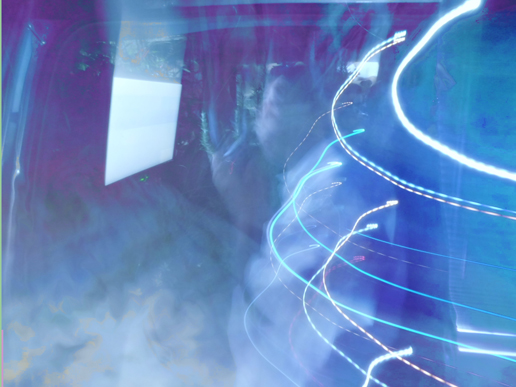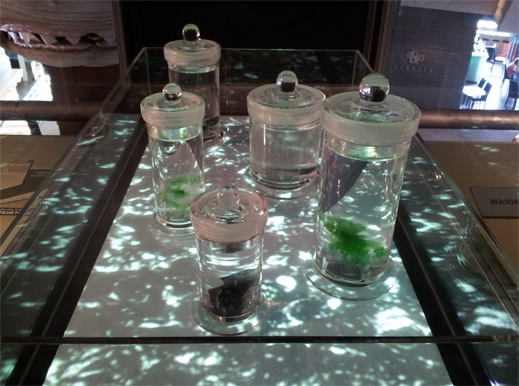media art project selected
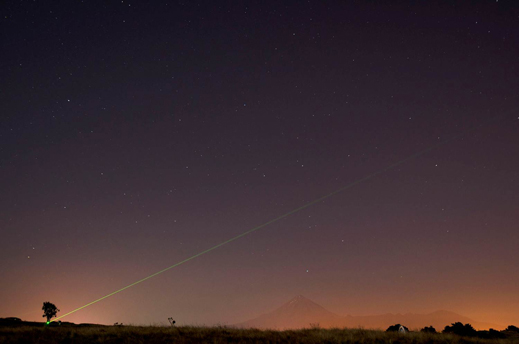
This image of the laser being tested was taken during the SCANZ residency in January and February 2013 (photo by Kalya Ward)
Laser Karakia Artwork Selected as Media Art Project 2014
A project that utilises laser light technology to carry sound has been selected as the Intercreate Media Art Project 2014. Ko Tatou Te Tangata by Stuart Foster and Kura Puke, with Dr Te Huirangi Waikerepuru and Te Urutahi Waikerepuru, will employ oscillating lights to carry both the human voice and environmental sounds.
The technology was tested at SCANZ, an artist residency held at WITT in New Plymouth earlier this year. Laser beams were sent to a light receptive panel that had speakers connected. The result was that waiata, karakia, karanga and sounds of moving water were transmitted. For the SCANZ project, the karakia was contributed by kaumatua Dr Te Huirangi Waikerepuru with the tangata whenua, Ngāti Tawhirikura.
Kura Puke (Tapuke) has whakapapa to the hapu of Katere ki Te Moana marae, which extends from the clifftop at Fitzroy, to Te Rewa Rewa Pa on the coastal walkway. Both Puke and Foster are lecturers at Massey University Wellington, while Te Huirangi Waikerepuru and Te Urutahi Waikerepuru direct Te Matahiapo Research Organization based in New Plymouth.
For the Media Art Project they wish to deepen the engagement with tangata whenua and locals, and investigate how to “transform an environment often seemingly subsumed by commercial industry into an awareness of the dynamic layered diversity of the land” which involves embracing “the intangible and the unseen energies” to inquire into and visualise ideas about, wairua (essence), mauri and the virtual.
As the commissioner of the work funded by the Arts Council of New Zealand we are extremely pleased with the calibre of the project, and the way advanced technology is integrated with the local environment, local community groups and customary Maori knowledge.
Background to the project
Intercreate Trust is based in New Plymouth and Auckland, with head office in New Plymouth. Funding was received from the Arts Council of New Zealand to commission a project that inspired “artists and creative teams to think boldly about combinations of cultural ideas and contemporary media technologies, that could be implemented in public space and/or Pukekura Park in New Plymouth. The projects are likely to involve working with local groups.” A second project is under consideration.
The selection process involved blind review, where the selection panel does not know the names of the people applying. While the applicants submit a CV, the CV also doesn’t mention names.
The panelists were: Chris Connolly, Pukekura Park curator; Nina Czegledy, who is the Intercreate International Research Fellow; and Australian based curator Leah Barclay. Intercreate’s Executive Director was not on the panel and ensured names were omitted from the applications, prepared the applications for review by the panel and also collated the panel responses. Rhana Devenport was on the selection panel until she left for Auckland, as was Anna Carrington until her move to Wellington.
Artists full statement
In their application, the artists Puke and Foster stated that “this trans-disciplinary collaboration hopes to contribute to innovative knowledge transfer with the tangata whenua, and to offer an experience that may deepen the engagement of local people and visitors through inclusive visual-aural ceremonial and relational events. They also wish to investigate, through social encounter and art-design culture, how to transform an environment often seemingly subsumed by commercial industry into an awareness of the dynamic layered diversity of the land which involves embracing the intangible and the unseen energies to inquire into and visualise ideas about, wairua (essence) mauri and the virtual.”
Useful links
Intercreate page describing the project and how to apply
http://www.intercreate.org/media-art-projects/
Artist links
Kura Puke
Stuart Foster
Te Huirangi Waikerepuru and Te Urutahi Waikerepuru
Maori translation and dictionary site
http://www.maoridictionary.co.nz/
WITT (Western Institute of Technology at Taranaki) site of SCANZ residency where technology was tested by the artists
http://www.witt.ac.nz/
Creative New Zealand Toi Aotearoa The Arts Council of New Zealand, funder of the MAP 2014 project
http://creativenz.govt.nz/
Like us on Facebook
Follow us on Twitter


